![How to Build A Creative Writing Portfolio That Attracts Clients [With Examples]](https://media.journoportfolio.com/system/blogs/2d6e00d3-c596-4de9-b741-2de05ead6045_max-600.jpg)
How to Build A Creative Writing Portfolio That Attracts Clients [With Examples]

Kara Devlin
Published onBuilding a creative writing portfolio is essential if you want to work as a professional writer.
Your portfolio is your one-stop-shop that you steer every client and collaborator towards. It gives them an idea of who you are and what you do. Putting together a high-quality creative writing portfolio is one of the most effective ways to attract clients and gain new projects to work on.
Unfortunately, this is part of the business that many writers struggle with. It can be intimidating to build up an entire website dedicated to just you and your work.
This guide will take you through every step to create a portfolio from scratch. By the end of this article, you will have a fully customized creative writing portfolio that showcases your talent and introduces yourself to the writing world.
The Importance of a Strong Creative Writing Portfolio
Why is it necessary to have a portfolio for your work in the first place?
In the US alone, there are more than 50,000 professional writers. As time goes on, the number of writers is growing and the job opportunities are decreasing.
While the market grows more competitive, it is becoming more and more essential to have a way to promote your unique abilities and showcase your talent.
Whatever goals you have for your writing career, you will need a way to convince people to invest in you or hire you in order to get there. This is where your portfolio comes into play. Your creative writing portfolio is proof of what you are capable of as a writer. It gives a little introduction of who you are and what you offer, but most importantly, it illustrates to potential clients that you have the capabilities to pull off what they want, whether this is a television script or a ghostwritten autobiography.
A strong creative writing portfolio will have the following characteristics:
A Short, but Strong Headline: Sum up what you do within the first few words of your landing page. Potential clients need to know immediately whether they are in the right place to get what they are looking for.
The Very Best Examples You Have to Offer : A strong portfolio does not just pile together everything the author has written. It brings together the author's best examples in their specific niche. This makes any potential client immediately realize that this is the exact person they need for the project they want to deliver.
A Section Introducing Yourself : A strong portfolio considers that potential clients are not just interested in working with a good writer, they also want to collaborate with a friendly and responsive person. Take the time to introduce yourself and build up the picture that you will not just be an awesome writer, but a fantastic collaborator as well.
An Effective Call-to-Action : You need to easily guide potential clients to not just read through your portfolio but hire you immediately. This will usually be a "contact me" button at the bottom of the page that will encourage clients to inquire about your work.
5 Easy Steps to Build Your Own Creative Writing Portfolio
1. Choose a Platform to Host Your Content
There are hundreds of websites out there offering to host your portfolio for you. Some come with a steep learning curve, and others are just downright confusing. For this reason we strongly recommend Journo Portfolio.
Journo Portfolio is designed specifically to create your own professional creative writing portfolio within minutes. It allows you to create multiple pages, click and drop elements, and use your own custom URL. You can easily create a professional and unique portfolio to showcase your writing with this simple platform.
2. Upload Your Collection of Writing Samples
Gather together the pieces you have written and start adding them to your website. Include images, links, and descriptions of your work where necessary to add context to your completed works.
Remember not to add every piece you have ever written. Carefully curate your work to give the best impression of yourself, picking only the highlights of your career to show off to potential clients.
3. Get Creative with How You Present Your Work
If you are a creative writer then clients will be looking for you to be creative and expressive with everything you do. This includes the way you present your work within your portfolio. Take advantage of color, fonts, and formatting to build captivating designs that show off your unique style outside of the written word. Create multiple collections to show off your different forms of writing, each with their own distinctive formatting to show off your versatility.
Find an interesting way to illustrate your approach to your work. Introducing yourself in a friendly manner and employing creative design strategies will show potential partners that you are the ideal choice for them.
4. Utilize The Full Potential of Your Website
Some websites thrive off of simplicity, while others find effective ways to display work over dozens of sections and multiple pages. The point is: your website is entirely customizable to fit your specific needs. If you are an author that covers multiple genres or styles within your writing, you may want to use additional pages to show off your versatility.
A couple of pages can add a lot to even the simplest portfolios. A simple "about me" or "contact me" page can give your clients all the information they need to determine why and how they will hire you for their next project.
You can ensure clients see your website as professional and unique by using a custom URL. This adds a sense of authority as clients will see that you have invested in building your personal brand.
5. Share Your Portfolio
Now that you have completed creating your portfolio, you can share it with the world! The goal of your portfolio is to give a full picture of who you are as a person and a writer, which makes it ideal to send to everyone you know, even if you don't really know them. Pitching new clients and publications is easy with your new portfolio.
Utilize any and all social media channels you are active on to share your new portfolio. Even people who may not be looking for writers themselves may know someone else who is, and they can pass your portfolio along. The more eyeballs on your work, the better chance you have of getting contacted for new and exciting projects.
Every time you update or change your portfolio, you can renew interest in your work by sharing your developments online. There is no restriction on how many times or ways you can show off your work to others.
Common Questions on How to Create an Effective Writing Portfolio
Can I Create a Writing Portfolio With No Published Work?
Of course! Many new writers feel anxious about creating a collection of their stories if they have had no paid work or testimonials to back them up. There is no rule that says you can only use published work for your writing samples.
It is a good idea to create a portfolio even if you have no published work as this will still be your way into gaining more clients and projects. Pick out some of your best samples, or write them up specifically for this purpose, and showcase them on your website.
How do I Build a Writing Portfolio for University?
Creating a portfolio to use for MFA applications or university grading is not so different from creating one to find work. Follow the steps listed in this guide and simply personalize your portfolio to meet the specific requirements you are looking for. For example, include a page on your academic experience or a section dedicated to why you are interested in an MFA. Your portfolio is entirely yours to customize, so take advantage of this if you are creating it for a specific purpose.
Should I Include Every Piece I Have Ever Written in my Portfolio?
The answer to this question is a definite no. While you may be a fantastic writer, there is no doubt that some of your pieces are better than others. Cut out the pieces you are not so happy with, and leave your best pieces to fill out your portfolio. Remember: quality is much better than quantity.
The Best Writing Portfolio Examples to Help You Get Started
Isabel Wyatt
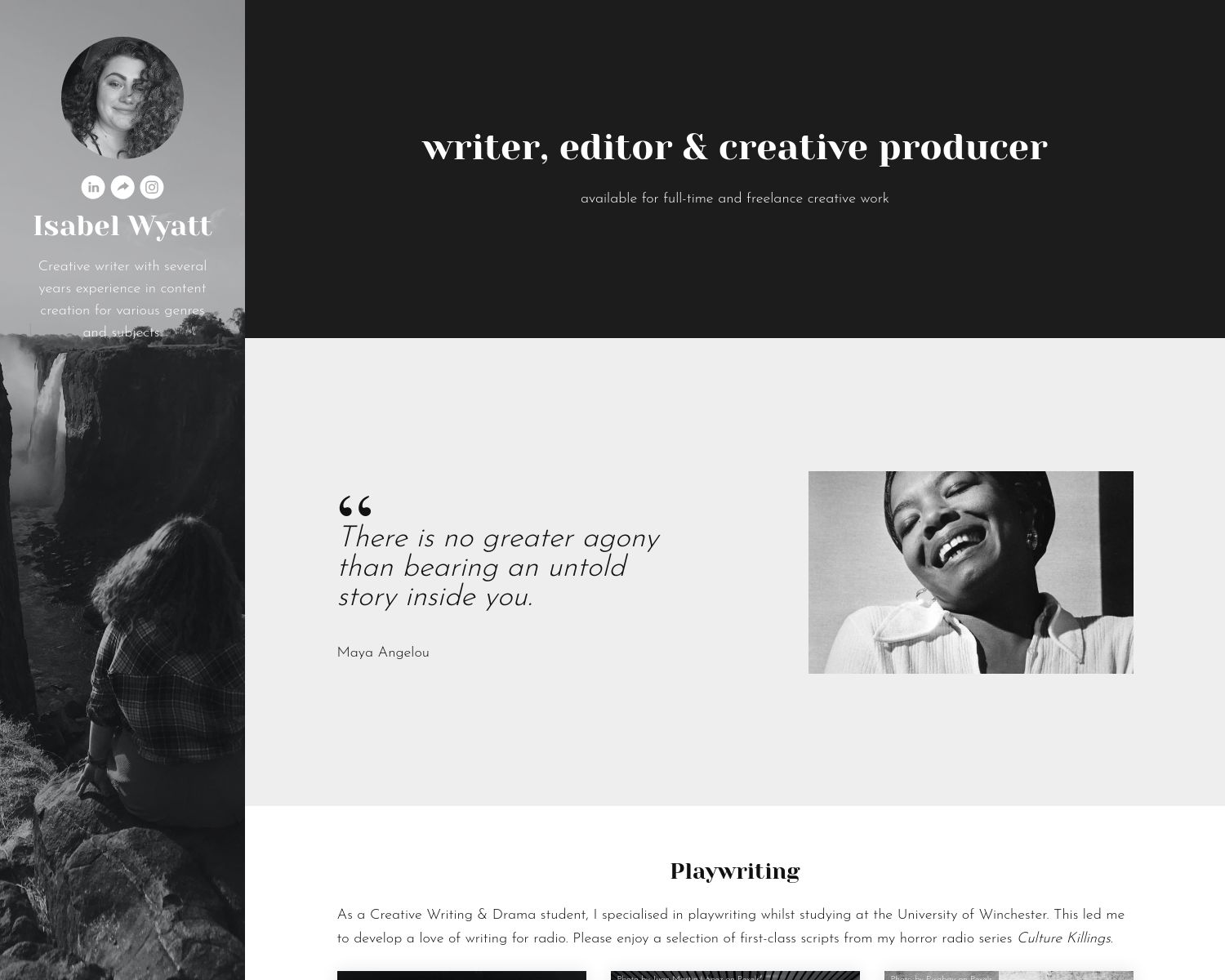
See Isabel's portfolio here: isabelwyatt.journoportfolio.com
This portfolio includes so many fantastic elements in a truly creative way. Isabel Wyatt starts off her landing page with a succinct header to immediately showcase her three roles within the create industry : writer, editor, and creative producer. Wyatt also employs a side bar with a description and photo of herself, introducing her personality and experience alongside each other to potential new clients.
Wyatt formats her portfolio as a story, describing her different work and adding examples as she goes along. She does not let her examples sit by themselves, adding her creative thought process and project approach to enhance her completed work.
This portfolio is the perfect example of how to pick and choose your best work. Wyatt only picks work samples that illustrate her process and results, limiting herself to two or three pieces per section. This prevents overwhelming or confusing readers.
Abigail Miller
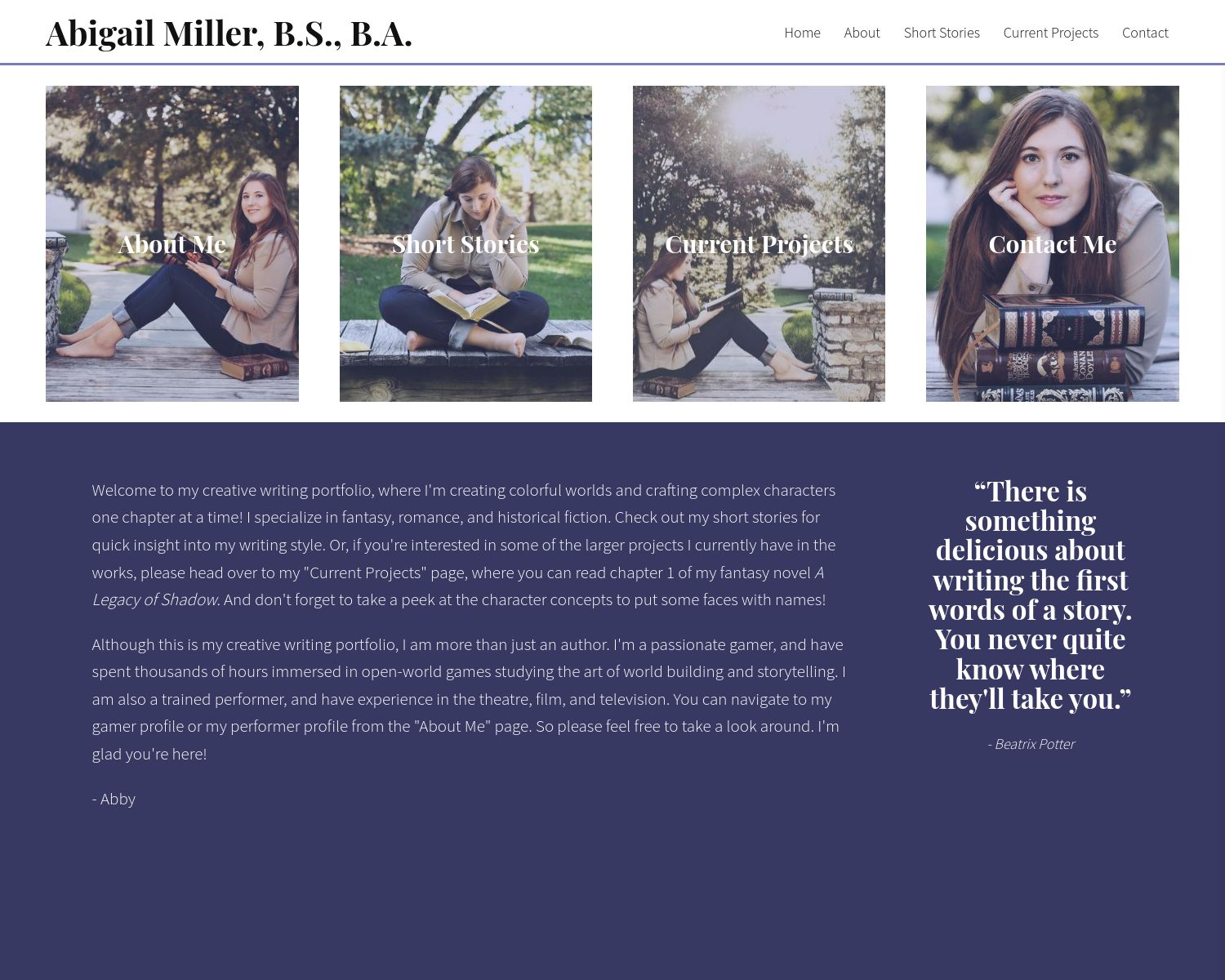
See Abigail's portfolio here: abigailjoannachicago.journoportfolio.com
Abigail Miller effectively presents her portfolio for her readers to have easy access to each part of her work. She puts the sections of her site right at the top of the landing pages, directing clients to click through to see her short stories, current projects, or just to directly contact her. This means that clients do not have to read through lots of irrelevant examples if they are just looking for one specific piece.
Miller also makes use of creative imagery and a succinct, friendly description to introduce her readers to who she is as soon as they land in her portfolio. This means potential clients get an instant impression of who she is and whether they want to work with her or not.
Additionally, Miller is transparent about her creative process, giving examples of her character concepts alongside her work. This allows clients to see how she approaches projects and achieves successful results.
Nick Pullara
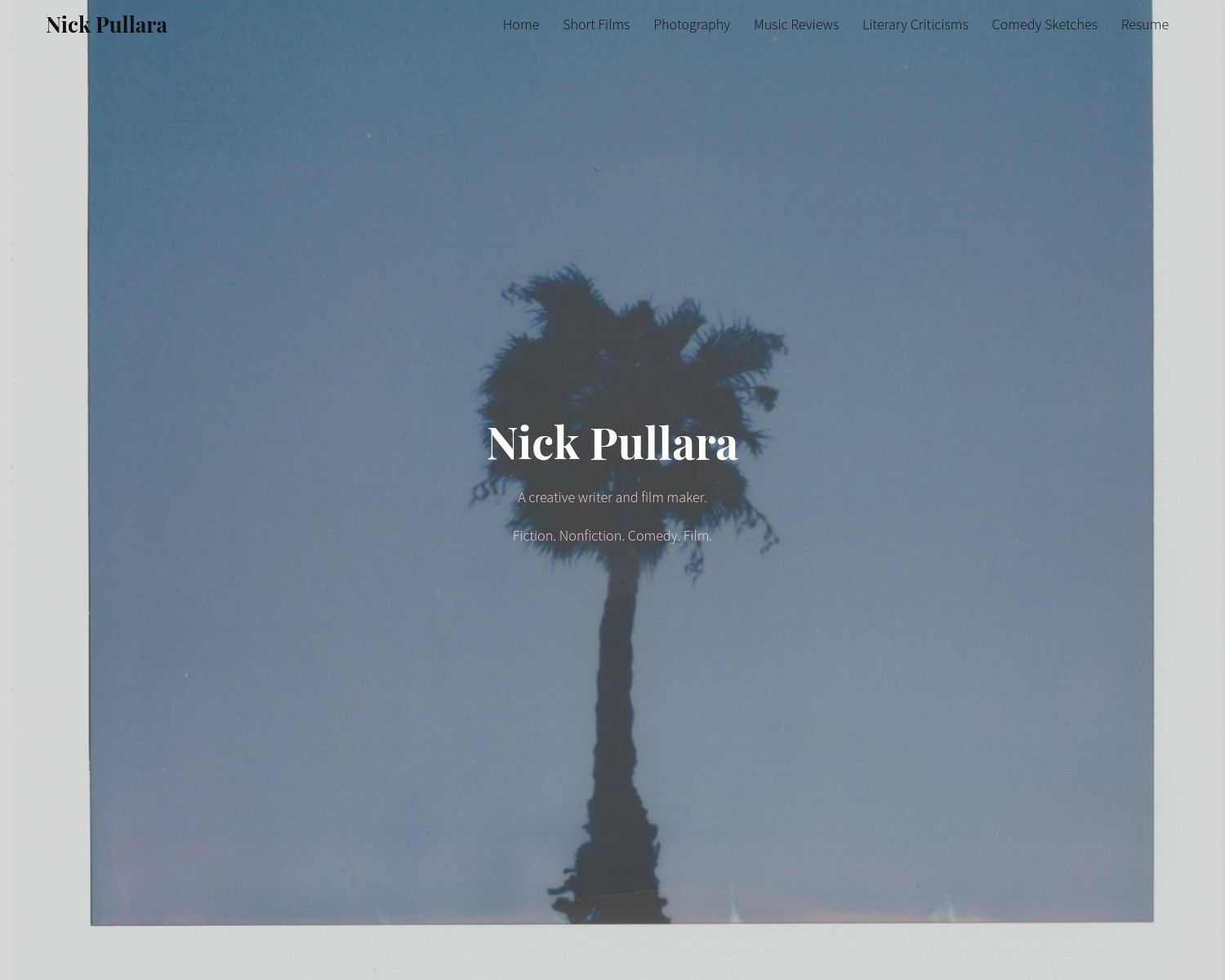
See Nick's portfolio here: pullaranick.journoportfolio.com
Nick Pullara's minimalist, but evocative landing page draws in readers to click through the rest of his site to learn more about him and his work. He knows he does not need to explain all of his work in the first few words of the page, letting intrigue work for him.
Pullara also utilizes multiple pages for different projects, and gives each section of his work the time it deserves. This means that potential clients will also give each example the time it deserves as they have to devote their attention to one section at a time.
Pullara also includes a page dedicated to his professional resume, making it even easier for potential clients to see his experience with creative projects. While this is not a necessary step for many writers, it can be extremely helpful for writers who are looking for more corporate projects.
Vinati Sukhdev
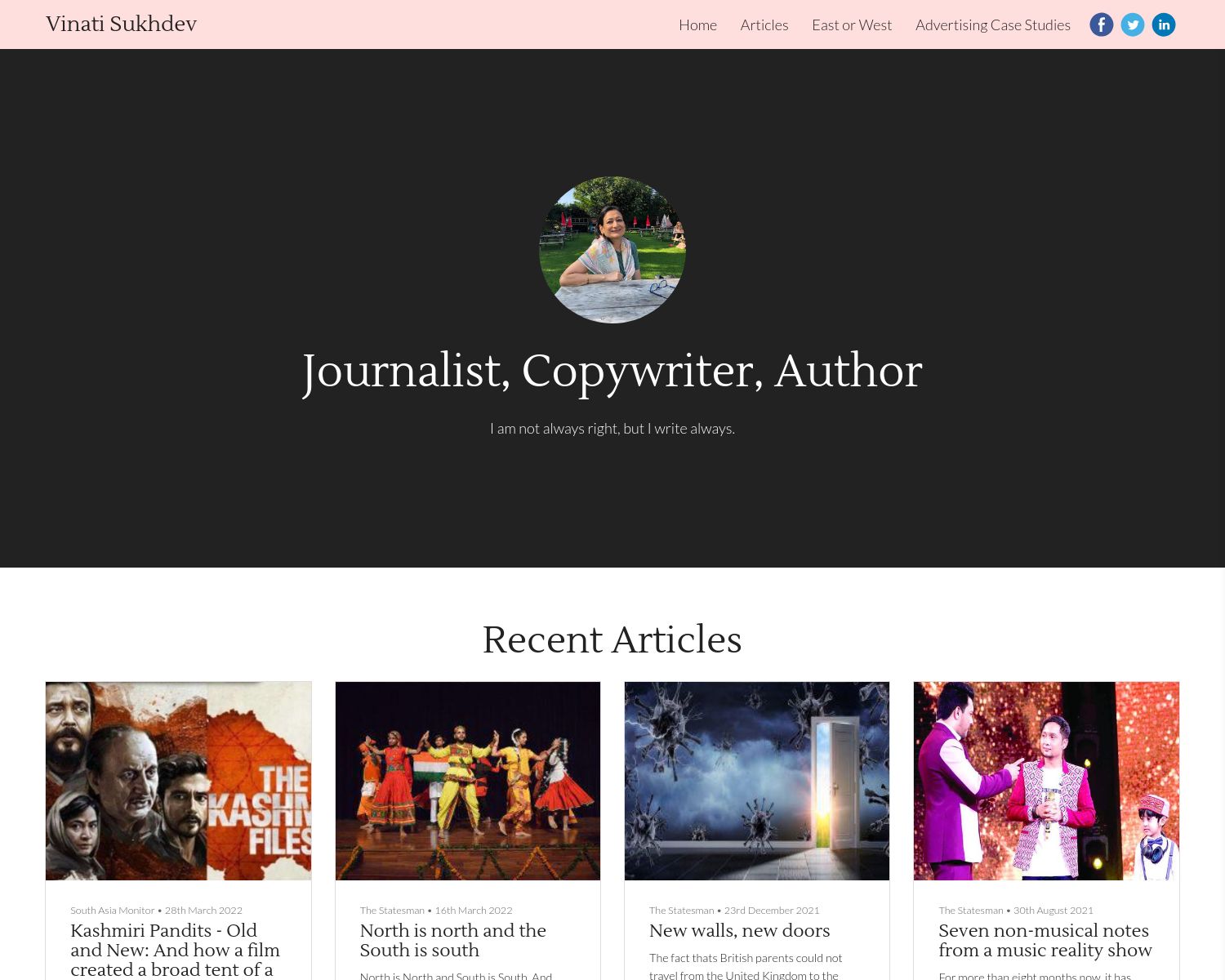
See Vinati's portfolio here: www.vinatisukhdev.com
Vinita Sukhdev effectively utilizes all aspects of her site to give readers a full picture of her accomplishments as a creative writer.
Sukhdev's "East or West" page gives extended details on her book and its reception, linking images and videos to illustrate various moments of its launch. Sukhdev also includes excerpts from the book and interviews about it, employing all this information to demonstrate how well this project did. Best of all, this page uses an effective call to action for readers, a simple button that directs them to an amazon page to buy the book.
In Sukhdev's " Advertising Case Studies" section, she illustrates her work within advertising, giving each case study an individual page which explains her approach and its success to each campaign. She includes images within these pages, giving proof to back her words.
Melissa Alvaredo Sierra
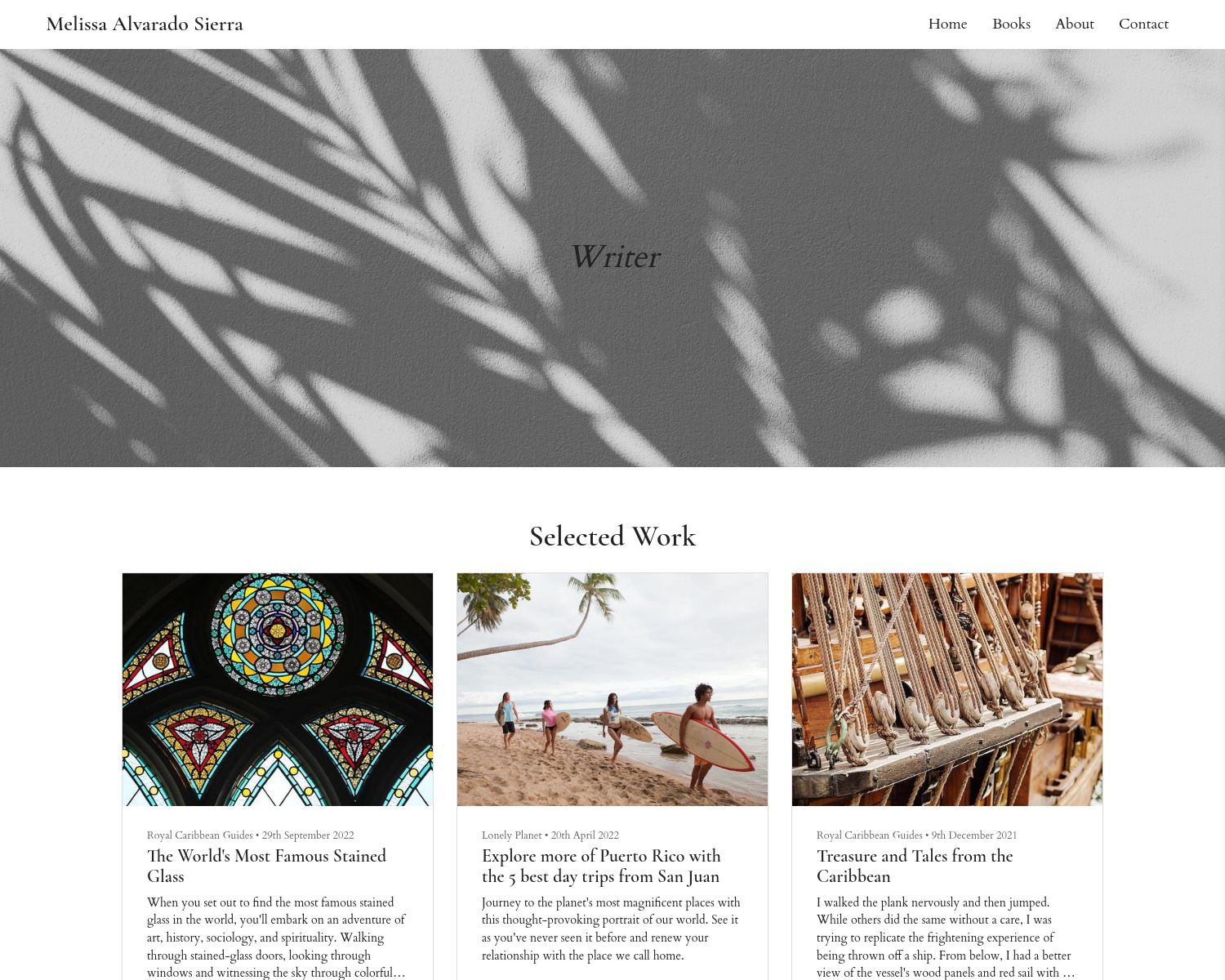
See Melissa's portfolio here: melissaalvarado.journoportfolio.com
Another fantastic example of a creative writing portfolio, Melissa Alvadero Sierra's website is an effective landing page for all potential clients. This begins with her succinct header, "writer", which immediately lets readers know they are in the right place.
Her minimalist layout pushes her work to speak for itself, letting potential clients see if she is the right fit using just her completed projects.
Moreover, Sierra's "About" page is also extremely effective, detailing her accomplishments and goals so anyone can get a clear idea of her recognised talent and ambition.
Time to Get Started on Your Very Own Portfolio
Now that this guide has shown you exactly how to build an effective creative writing portfolio that attracts clients, it is time for you to start making your own.
Hop onto Journo Portfolio, upload your work, and play around with the settings as much as you want to create a website that is uniquely you. Take a good look at your past work and decide what to include, and how to include it. Then, just share your website with the rest of the world, sit back, and watch as clients jump to work with you on their next big project. Remember to keep updating your site with any fresh pieces you work on throughout your career.
Working as a professional writer becomes so much easier once you have made and shared your portfolio. Don't hesitate to get started!





